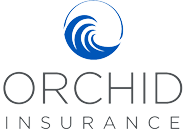Despite early doldrums, the federal government is upping the ante on another active Atlantic hurricane season in 2021. As the hurricane season enters the peak months of September, and October, the National Oceanic and Atmospheric Administration is now predicting seven to 10 hurricanes to form in the Atlantic.
If this slight increase from the six to 10 hurricanes and 13 to 20 total named storms that were predicted at the start of the season in May holds true, it will mark a record sixth-consecutive year of above-normal activity.
Overall, NOAA believes 15 to 21 named storms will develop. That number includes tropical storms, which have wind speeds of 39 mph or higher. Storms become hurricanes when winds reach 74 mph. Of the predicted hurricanes, three to five could be major, with wind speeds of 111 mph or higher.
While high winds can cause heavy damage to property, homeowners should not assume that their insurance will provide comfort and relief from hurricanes.
“It’s alarming how many homeowners do not understand what is in their insurance policies,” said Susan Relicke, Florida Regional Manager at Orchid Insurance, a specialty underwriter of catastrophe-exposed property insurance. “It’s the responsibility of an agent to speak with their clients to review the finer details of what coverage is included in their insurance policies.”
Relicke said while there is no such thing as “hurricane insurance,” most standard policies will cover losses caused by named storms. However, she warned that most homeowner’s insurance excludes flooding damage to a home or related belongings. In some coastal areas, a policy may also partially or completely exclude wind damage.
Get Wind Of
“High winds can wreak havoc on the sturdiest structures and the contents inside,” said Billy Breaux, the Gulf Territory Sales Manager at Orchid Insurance, which offers separate policies to raise the coverage limits for wind- and hail-related damage. “Even a small leak in a damaged roof line can cause large-scale water problems across major home systems.”
Breaux said Orchid offers a Wind-Only product, also called windstorm insurance, which serves as a special endorsement that can be added to a policy when basic homeowner’s coverage is not enough to guard against damage caused by wind or hailstorms. It also may cover property damage caused by rain if a windstorm or hail flurry creates an opening in a roof or wall that allows rain to enter a home.
“Wind-Only coverage is designed to complement a homeowner’s policy,” he said. “The added security covers damage from named hurricanes and tropical storms as well as everyday weather events but does not insure against perils beyond wind and hail”
Make No Mistake
Breaux said a good agent will set up a client with coverage that includes a combination of homeowners, flood, and wind insurance.
“Homeowners should not have to learn from their experiences,” he said. “Agents need to adequately explain to them risks, such as difference in actual replacement cost and replacement cost. The big difference between the two is the depreciation.
Breaux said replacement cost provides more protection because it will cover whatever it takes to make the repair on a loss, say a roof. Actual cash value, on the other hand, consider the shape the roof was in prior to damage.”
Already this year, five named storms have formed including Hurricane Elsa, which spun up along the west coast of Florida in early July. Historically, only two named storms form on average by early August. Hurricane season runs through runs through Nov. 30.
Orchid Underwriters Insurance, LLC, is the First Choice for catastrophic-exposed property insurance. If you need flexible products, fast processes, expert underwriting and competitive pricing, superior customer service is a phone call away at 1-866-370-6505 or visit https://orchidinsurance.com/


